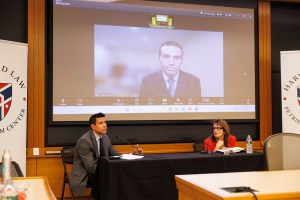Science & Tech
-

Harsh past might bare its teeth
Early adversity leads to higher aggression and fearfulness in adult canines, study says

-

What will AI mean for humanity?
Scholars from range of disciplines see red flags, possibilities ahead
-

‘Human exceptionalism is at the root of the ecological crisis’
Saving the planet requires getting over ourselves, argues author of ‘The Arrogant Ape’
-
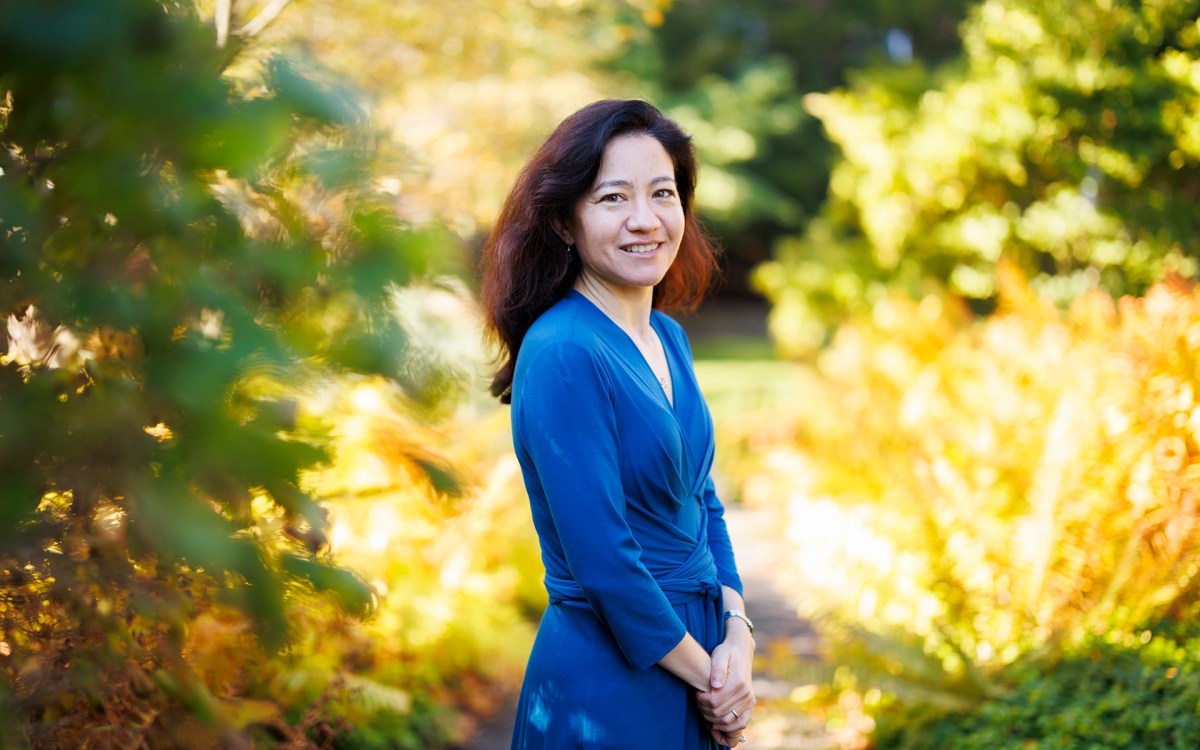
Lauren Williams awarded MacArthur ‘genius grant’
Math professor honored for theoretical breakthroughs with sometimes surprising applications across phenomena such as tsunamis, traffic
-
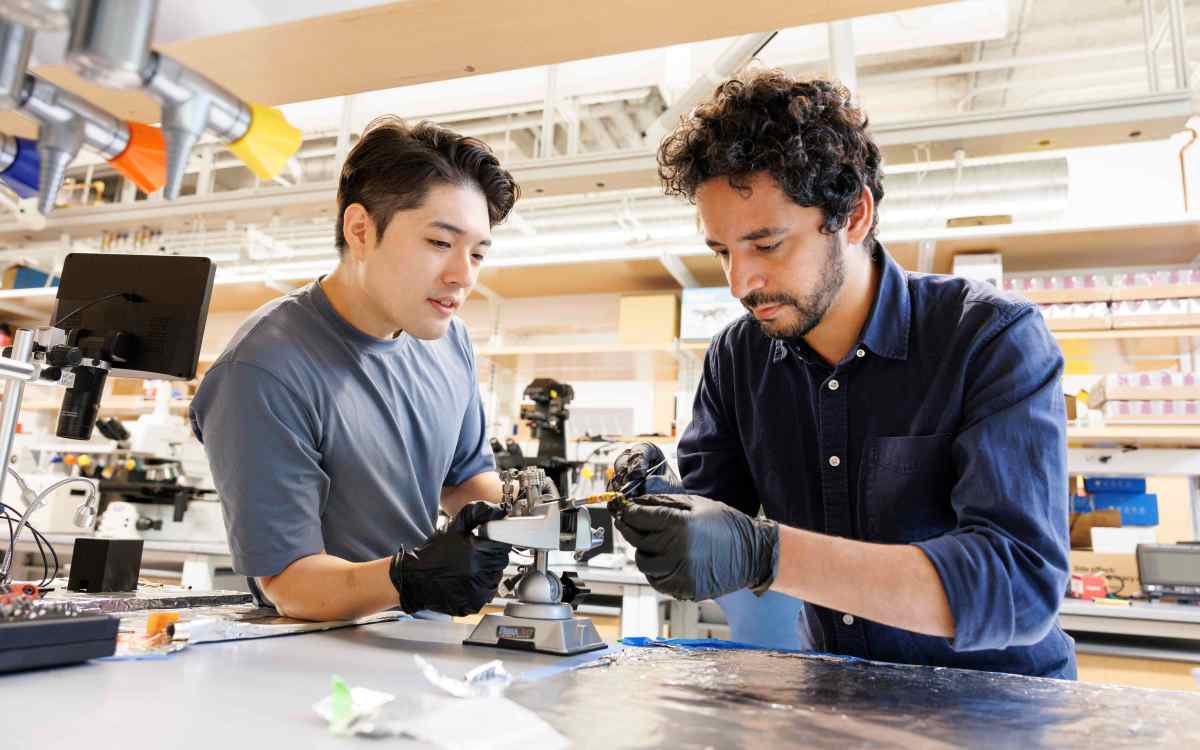
-
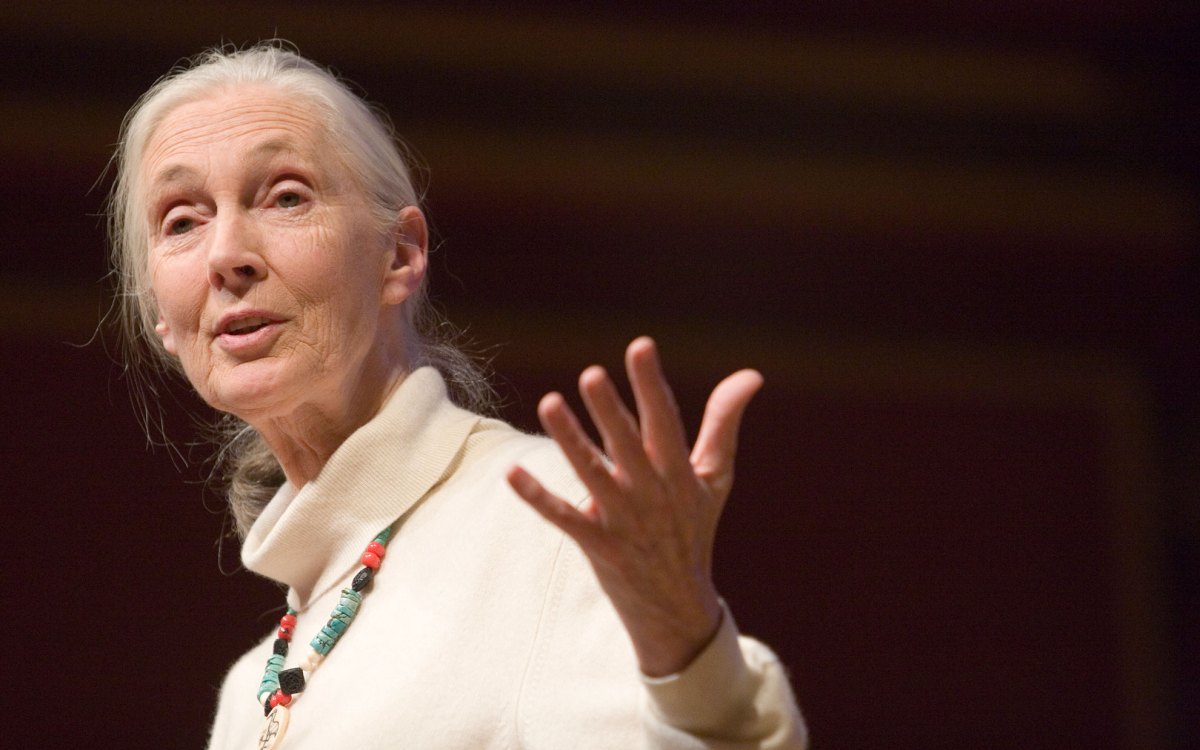
‘She had a sense of caring for everybody that she encountered.’
Richard Wrangham remembers his teacher and colleague Jane Goodall as a force of science, empathy, and hope
-
Physics for the musical masses
Harvard physicist Lisa Randall is taking Paris’ opera-going public to the fifth dimension this month, working with a composer and artist to present an opera that incorporates Randall’s theories about…
-
Green reunions: Groundwork set
As of June 4, Harvard has celebrated 358 commencements. Add to that the simultaneous celebration of untold thousands of reunions.
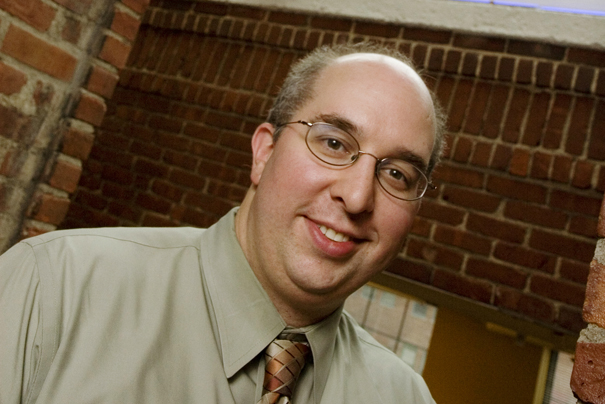
-
Physics for musical masses
Harvard physicist Lisa Randall is taking Paris’ operagoing public to the fifth dimension this month, working with a composer and artist to present an opera that incorporates Randall’s theories about extra dimensions of space.
-
‘Water guy’ John Briscoe stays in motion
For someone who deep-sixed his BlackBerry (instant e-mail was taking over his life) and traded the local newspaper for a good book (“What do I need to know about Celtics’ scores?”), John Briscoe ’76 is as worldly a person as you are ever likely to meet.
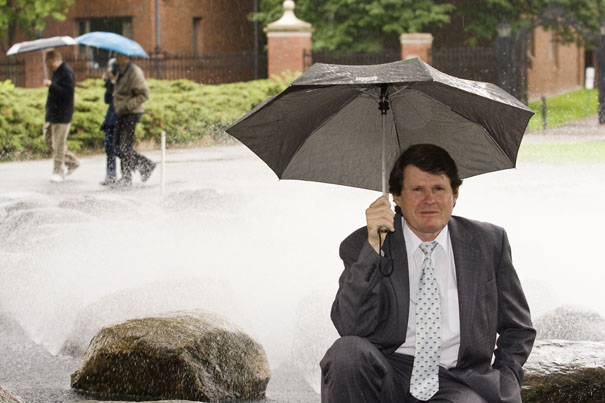
-
Trading energy for safety, bees extend legs to stay stable in wind
New research shows some bees brace themselves against wind and turbulence by extending their sturdy hind legs while flying. But this approach comes at a steep cost, increasing aerodynamic drag and the power required for flight by roughly 30 percent, and cutting into the bees’ flight performance.
-
Geology is destiny
As a teenager in Toronto in the 1950s, Paul Hoffman would spend hours in the Royal Ontario Museum studying its collection of rocks and minerals. He became a passionate collector, trading rocks with friends and exploring abandoned mines in search of crystals.
-
Class of 1984 takes giant step in reducing carbon footprint
For its fifth reunion, the Class of 1984 added community service to the celebration — a novel feature that other reuniting classes have since copied.
-
Health, life insurers hold billions in tobacco stocks
More than a decade after Harvard Medical School researchers first revealed that life and health insurance companies were major investors in tobacco stocks – prompting calls upon them to divest…
-
Invention of cooking drove evolution of the human species, new book argues
“You are what you eat.” Can these pithy words explain the evolution of the human species? Yes, says Richard Wrangham of Harvard University, who argues in a new book that…
-
Scholar makes robots that detect land mines
On Oct. 10, 2005 — he remembers the date exactly — Thrishantha Nanayakkara was driving down a country road, headed for a science workshop at Jaffna Central College, a high school in the far north of Sri Lanka. The event was designed to distract potential child soldiers from the allure of war.
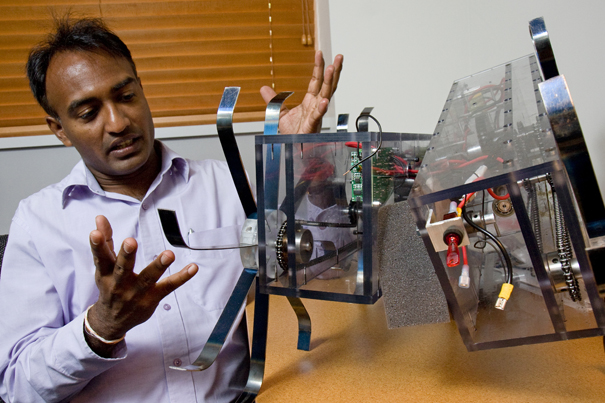
-
Leadership Initiative Fellow Bolden nominated to lead NASA
Retired Marine Maj. Gen. and former astronaut Charles Bolden was nominated to be the head of NASA on Saturday (May 23), interrupting his stay at Harvard as anAdvanced Leadership Fellow.
-
New department reflects the evolution of human evolution
Earlier this month, the Faculty of Arts and Sciences (FAS) made official what scientists worldwide have known for years: Harvard is a hotbed of research and teaching in the field…
-
Hospice care under-used by many terminally ill patients, study finds
A new study led by researchers at Harvard Medical School (HMS) found that only about half the patients diagnosed with metastatic lung cancer discuss hospice care with their physician within…
-
‘Black Holes’ at the Museum of Science
The exhibition “Black Holes: Space Warps & Time Twists,” produced by the Harvard-Smithsonian Center for Astrophysics, will open at the Boston Museum of Science on June 21. The exhibit journeys to the edge of black holes to discover how recent scientific research is challenging notions of space and time, and, in the process, turning science fiction into fact. Discounted museum passes are available through Outings & Innings, 9 Holyoke St., (617) 495-2828.
-
Understanding materials to make microdevices
In the 1990s, semiconductor companies began to incorporate a wider variety of materials into the construction of computer chips, selecting materials based on how they would perform electrically and not necessarily on how they would stand up to the rigors of the manufacturing process or continued use.
-
Looking at ‘spoiled’ Americans through an energy lens
In 1968, the United States was exporting oil. A decade later, given massive increases in domestic demand, it was importing half of this coveted fuel.
-
Scientists create custom three-dimensional structures with ‘DNA origami’
By combining the art of origami with nanotechnology, Dana-Farber Cancer Institute researchers have folded sheets of DNA into multilayered objects with dimensions thousands of times smaller than the thickness of…
-
Looking for subatomic insights in Minnesota
After years of planning, officials broke ground this month for a new high-energy physics experiment that will probe the behavior of one of the basic particles that make up the universe: the neutrino.
-
Kepler starts search for other Earths
As NASA’s Kepler space telescope this week begins scanning the Milky Way for planets that might harbor life, scientists at the Harvard-Smithsonian Center for Astrophysics (CfA) are keeping their fingers crossed and waiting for the data to start flowing.
-
Spiral swimmers may be new workhorses
Harvard researchers have created a new type of microscopic swimmer: a magnetized spiral that corkscrews through liquids and is able to deliver chemicals and push loads larger than itself.
-
Embryo’s heartbeat drives blood stem cell formation
Biologists have long wondered why the embryonic heart begins beating so early, before the tissues actually need to be infused with blood. Two groups of Harvard Stem Cell Institute (HSCI) researchers from Children’s Hospital Boston (Children’s) and Brigham and Women’s Hospital (BWH) — presenting multiple lines of evidence from zebrafish, mice, and mouse embryonic stem cells — provide an intriguing answer: A beating heart and blood flow are necessary for development of the blood system, which relies on mechanical stresses to cue its formation.
-
FAS launches budget Web site
The Faculty of Arts and Sciences (FAS) has created a new Web site to provide faculty, staff, and students with up-to-date information on cost-saving measures.
-
Climate Collaborative’s report suggests culture change
Last year, Harvard University pledged to reduce its greenhouse gas emissions 30 percent by 2016. That ambitious goal raised a single big question: How?
-
Spiral swimmers may prove micro workhorses
Harvard researchers have created a new type of microscopic swimmer: a magnetized spiral that corkscrews through liquids and is able to deliver chemicals and push loads larger than itself. Though…
-
Rockefeller grants open up world for undergrads
Nearly 500 Harvard undergraduates will learn about other cultures by participating in high-quality international experiences this summer, thanks to the generosity of David Rockefeller, longtime University benefactor and member of the Harvard College Class of 1936.
-
Molecular secrets in atomic nuclei
For Navin Khaneja, spinning nuclei are like atomic spies. With a little coaxing, they will tell the secrets of the molecules in which they sit.
-
Nectar nurtures pitcher plant’s eating habits
New research from the Harvard Forest shows that carnivorous pitcher plants use sweet nectar to attract ants and flies to their water-filled traps, not color, as earlier research had indicated.
-
Vocal mimicking, sense of rhythm tied
Researchers at Harvard University have found that humans aren’t the only ones who can groove to a beat — some other species can dance, too. The capability was previously believed to be specific to humans. The research team found that only species that can mimic sound seem to be able to keep a beat, implying an evolutionary link between the two capacities.
-
Life in the universe? Almost certainly. Intelligence? Maybe not
We are likely not alone in the universe, though it may feel like it, since life on other planets is probably dominated by microbes or other nonspeaking creatures, according to scientists who gave their take on extraterrestrial life at Harvard last week.
-
Geneticist ‘who doesn’t believe in God’ offers new conception of divine
The Paul Tillich Lecture, offered annually at Harvard since 1990, commemorates the memory of a public intellectual who was once “the largest theological figure in our orbit,” said The Rev. Peter J. Gomes.


